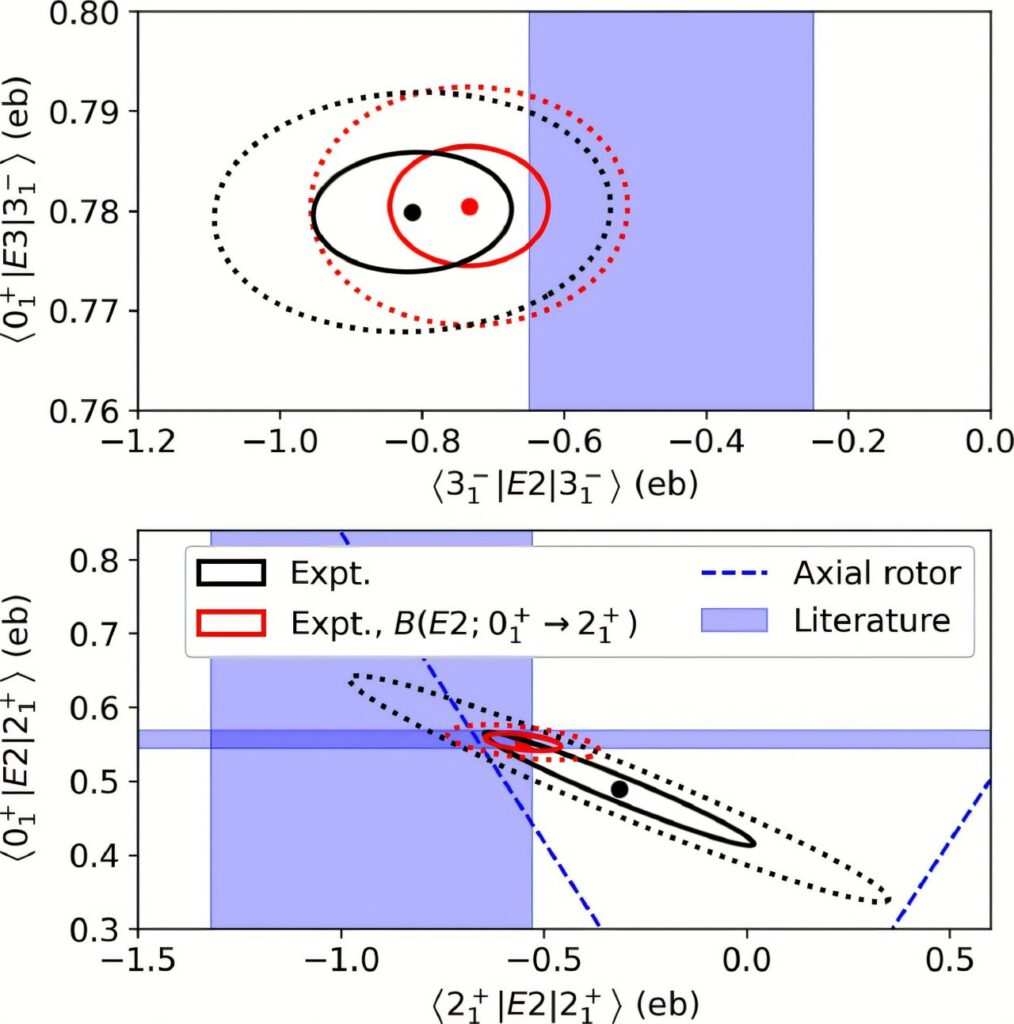New Discoveries About the Shape of the Lead-208 Nucleus
Introduction
Recent research led by the Nuclear Physics Group at the University of Surrey has uncovered surprising new details about the shape of the lead-208 nucleus. This finding challenges a long-held belief in nuclear physics that this atomic nucleus is perfectly spherical. This discovery could have significant implications for our understanding of atomic structures and the formation of heavy elements in the universe.
What is Lead-208?
Lead-208 (²⁰⁸Pb) is known for its incredible stability, which is due to it being classified as a "doubly magic" nucleus. In nuclear physics, "magic" refers to specific numbers of protons and neutrons in a nucleus that create exceptionally stable configurations. Lead-208 is the heaviest stable isotope of lead currently known.
Characteristics of Lead-208:
- Stability: Recognized for its resistance to radioactive decay.
- Doubly Magic: Contains a complete shell of protons and neutrons, contributing to its stability.
- Common Assumption: Traditionally thought to be perfectly spherical in shape.
The Study and Its Findings
Using advanced experimental techniques, researchers have determined that rather than being round, the lead-208 nucleus has an elongated shape, likened to a rugby ball, referred to as a prolate spheroid. This conclusion was drawn from a series of sensitive and precise measurements taken using state-of-the-art equipment.
Key Study Details:
- Unique Measurement Techniques: Researchers combined data from four different measurements.
- Equipment Used: The GRETINA gamma-ray spectrometer, located at Argonne National Laboratory in Illinois, was utilized.
- Methodology: Lead atoms were bombarded with particle beams accelerated to about 10% of the speed of light, creating distinct gamma-ray signatures. These signatures helped reveal the properties of the excited quantum states of lead-208.
Implications of the Findings
Re-evaluating Theoretical Models
The results of this study have prompted physicists to re-examine existing models that describe atomic nuclei. The elongated shape of the lead-208 nucleus suggests that the structure of these nuclei may be more complex than previously understood.
- Complex Vibrations: Researchers indicate that the vibrations of the lead-208 nucleus might not be as regular as earlier theories proposed when the nucleus is excited during experiments.
- New Research Directions: The findings indicate a need for refined theories around atomic nuclei and their deformations.
Future Research Opportunities
This groundbreaking work is expected to open new avenues for further research in several related fields:
- Nuclear Stability: Understanding how nuclei maintain their stability despite changes in shape.
- Astrophysics: Insights into the formation and behavior of heavy elements in stars and the universe.
- Quantum Mechanics: Expanding knowledge of quantum states and their behaviors in atomic nuclei.
Conclusion
The research led by the University of Surrey represents a significant shift in our understanding of atomic nuclei, particularly for lead-208. By demonstrating that this nucleus is not perfectly spherical, but instead slightly elongated, scientists are encouraged to rethink existing models of nuclear structure. This finding not only sheds light on the complexities of nuclear physics but also promises exciting developments in the related fields of astrophysics and quantum mechanics. As researchers continue to explore these findings, new theories and discoveries are expected to emerge, potentially reshaping our fundamental understandings of atomic structures.
Summary of Key Points
- Lead-208 has been found to have an elongated, rugby ball-like shape rather than being spherical.
- The discovery challenges long-standing assumptions in nuclear physics.
- Advanced measurement techniques led to these new insights into the lead-208 nucleus.
- Future research will focus on implications for nuclear stability, astrophysics, and quantum mechanics.
Researchers are eager to explore the potential of these findings in developing deeper insights into the nature of atomic nuclei and their behaviors. This study truly highlights the exciting and ever-evolving landscape of nuclear physics.
